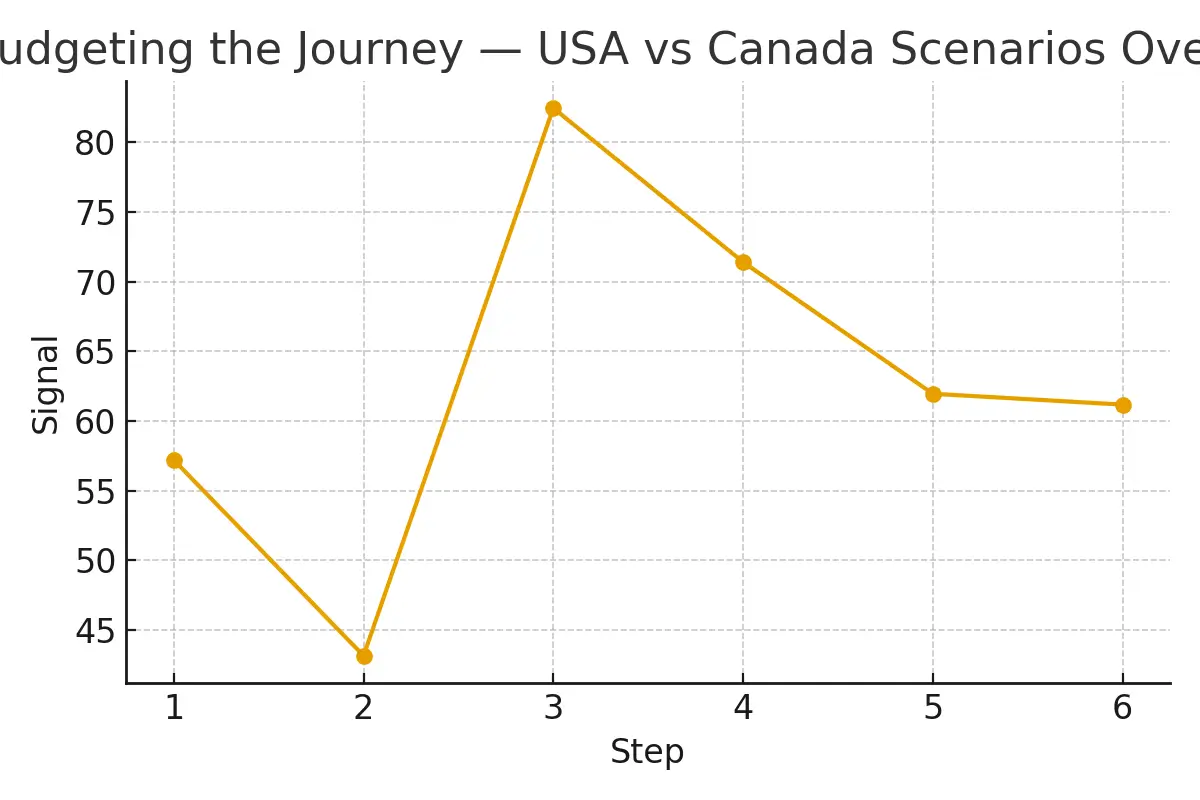
Planning your family through surrogacy or donor pathways involves more than medical steps—it also requires financial planning. Costs and logistics differ significantly between the USA and Canada. Understanding these differences helps LGBTQ+ parents set realistic expectations, avoid financial surprises, and move forward with confidence.
What It Is
Budgeting the journey means comparing USA vs Canada pathways for surrogacy and donor-related care. Each country has different medical systems, legal frameworks, and cost structures. These differences shape budgets, timelines, and live-birth probabilities.
Who It Helps
This guidance is most useful for intended parents who:
- Are deciding between pursuing care in the USA or Canada
- Want to compare budgets, laws, and insurance coverage across borders
- Need clear financial forecasting before making major commitments
It may not be the best fit if adoption, self-carry, or embryo donation are stronger options for your family.
Step-by-Step
A structured budgeting process reduces stress and avoids unexpected costs:
- Define Goals – Surrogacy, egg donor, embryo transfer, or combined care
- Compare Systems – USA (private, higher cost, faster timelines) vs Canada (public-private mix, lower cost, longer waitlists)
- Check Legal Frameworks – Contracts, parental rights, and donor rules differ by country
- Plan Insurance & Pre-Authorizations – Especially critical in the USA
- Set Up Tracking – Use line-item budgets and escrow to avoid surprise bills
Pros & Cons
USA Pathway
- Faster matching and treatment start
- Broad donor and surrogate availability
- Higher overall costs ($120k–$200k+)
- Insurance coverage often limited
Canada Pathway
- Lower overall costs ($60k–$90k+)
- Supportive legal framework for altruistic surrogacy
- Longer timelines due to donor and surrogate waitlists
- Limited clinic availability in some regions
Costs & Logistics
- USA: Higher upfront costs, faster availability, more donor/GC options
- Canada: Lower costs, but longer timelines and fewer surrogates
- Line Items: Agency fees, donor/GC compensation, medical costs, insurance, legal fees
- Cash Flow: Escrow and structured payment schedules protect both parents and surrogates
- Tracking: Checklists and budget tools reduce stress and prevent billing surprises
What Improves Outcomes
Decisions that truly change results:
- Lab Quality Indicators – Directly affect cumulative success
- Donor & Carrier Screening Standards – Improve implantation odds and reduce risks
- Uterine Evaluation & Protocol Timing – Protect embryo quality and live-birth probability
- Insurance Pre-Authorizations – Stabilize budgets and prevent unexpected expenses
- Mental Health Support – Improves decision-making and strengthens relationships
Case Study
One couple debated between the USA and Canada. By comparing timelines, agency fees, and lab quality, they realized that Canada fit their budget but risked long delays. They chose the USA, budgeting carefully with escrow and insurance pre-authorizations. The result: faster embryo transfer, controlled costs, and a smooth journey.
Mistakes to Avoid
- Choosing solely based on cost without considering timeline
- Skipping insurance and legal reviews
- Underestimating pharmacy fulfillment or clinic scheduling delays
- Ignoring mental health support during decision-making
- Failing to track expenses with line-item clarity
FAQs
Q. Why is surrogacy more expensive in the USA than in Canada?
Ans : Because the USA allows compensated surrogacy and has a private healthcare system, intended parents pay higher medical and agency fees compared to Canada’s altruistic surrogacy model.
Q. How long are wait times in Canada compared to the USA?
Ans : Canada often has waitlists for surrogates and donors, sometimes extending 12–24 months, while the USA typically offers faster matching and treatment starts.
Q. Are there legal differences between the USA and Canada?
Ans : Yes. The USA permits compensated surrogacy in most states, while Canada only allows altruistic surrogacy, which can reduce costs but limit availability.
Q. Can insurance cover surrogacy or donor costs?
Ans : In the USA, insurance rarely covers surrogacy but may cover maternity care. In Canada, some medical services are covered by the public system, but many costs still fall on intended parents.
Q. Which country gives higher live-birth success rates?
Ans : Success depends more on lab quality, donor age, and carrier health than country. Top clinics in both the USA and Canada achieve strong outcomes if protocols and screenings are followed.

Dr. Kulsoom Baloch
Dr. Kulsoom Baloch is a dedicated donor coordinator at Egg Donors, leveraging her extensive background in medicine and public health. She holds an MBBS from Ziauddin University, Pakistan, and an MPH from Hofstra University, New York. With three years of clinical experience at prominent hospitals in Karachi, Pakistan, Dr. Baloch has honed her skills in patient care and medical research.




